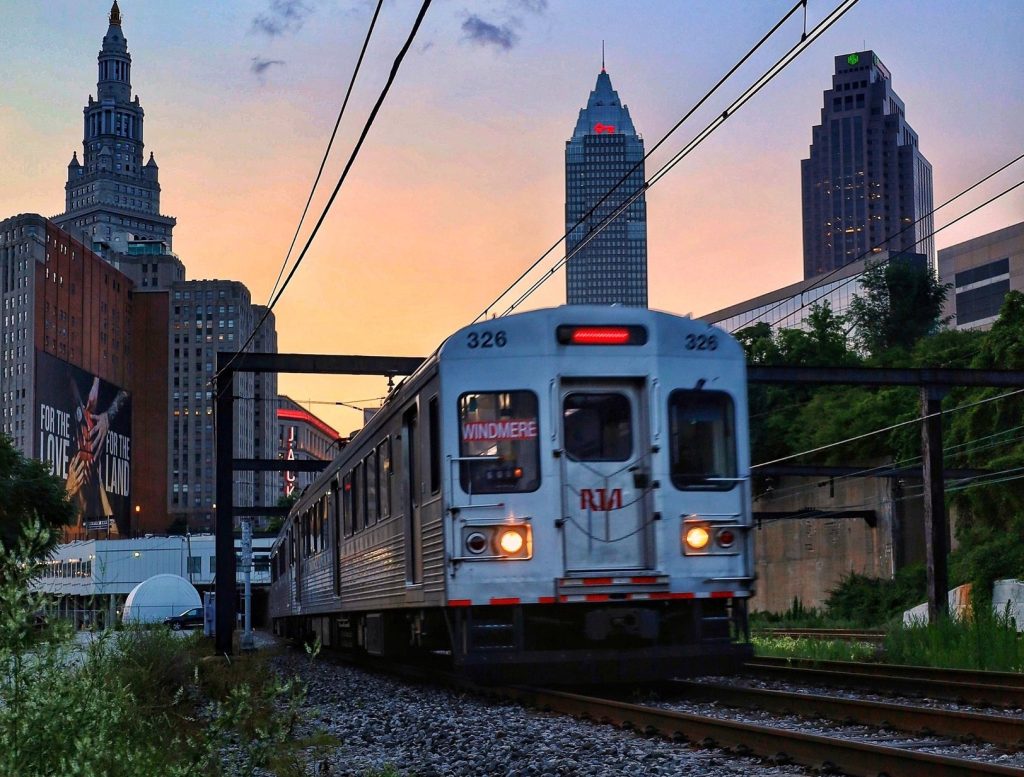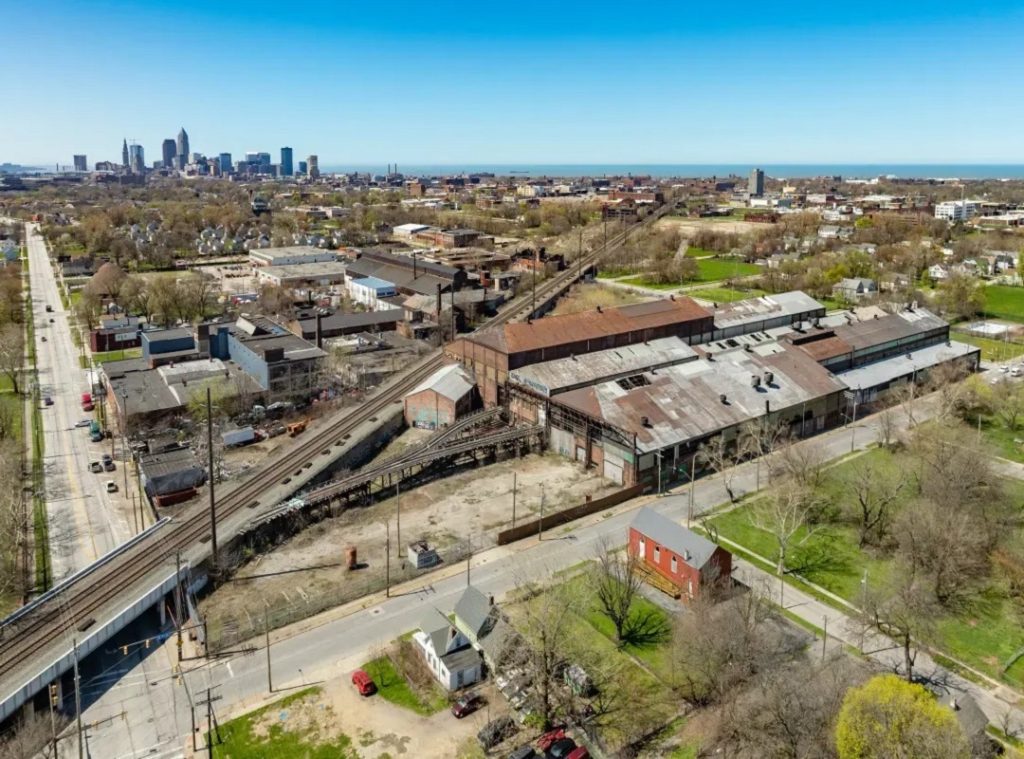
This is where Cleveland’s Central and Fairfax neighborhoods meet, at Norfolk Southern’s elevated railroad tracks near East 71st Street and Quincy Avenue. The railroad was once a four-track line and had many industries clustered along it. Now the area is largely devoid of employers and poverty is far above the national average. City, county and private leaders are working to assembly and clean properties to market them for redevelopment (Site Readiness Fund).
City, county & private deals done & due
Cleveland’s Central and Fairfax neighborhoods haven’t been a hot zone for new real estate development since the Jazz Age of the 1920s and 30s. Back then, streets like Cedar, Central and Quincy were hopping with jazz clubs, speakeasies, flappers and gangsters. Aside the many night spots were factories that hummed with tens of thousands of jobs during the daytime hours. Most were tightly clustered along the four-tracked Pennsylvania Railroad that was elevated in 1915 to reduce traffic congestion.
Today, most of the industries are gone, leaving vacant land and hollow, vandalized shells behind. Roaring past them are Norfolk Southern freight trains loaded with ocean-shipping containers of foreign-made goods. With the jobs nearly gone from along the tracks, almost half of all residents in the Central and Fairfax neighborhoods live in poverty.
If the lands left behind haven’t yet had their crumbling factories demolished, others haven’t yet been cleaned of toxins that oozed into the soil over more than a century of unregulated heavy industrial activity. Still other former industrial sites were on properties considered too small for industrial development today.
These smallish, fallow properties need to be cleared, cleaned and connected to compete with cheap cornfields and forests at the urban fringe that cannot be reached by Cleveland’s labor force in less than 90 minutes by bus. And that’s what is starting to happen in this area on a potentially grand and systematic scale.
The first public news of this land assembly activity was announced in a press release earlier this week. The city of Cleveland’s new Site Readiness for Good Jobs Fund made its first property acquisition — the former Wellman-Seaver Engineering Co., 7000 Central Ave. The city paid $845,000 for the 10-acre parcel with a vacant, 183,000-square-foot, 123-year-old factory on it. The factory was where the Hulett Ore Unloaders and other specialty machinery were built.
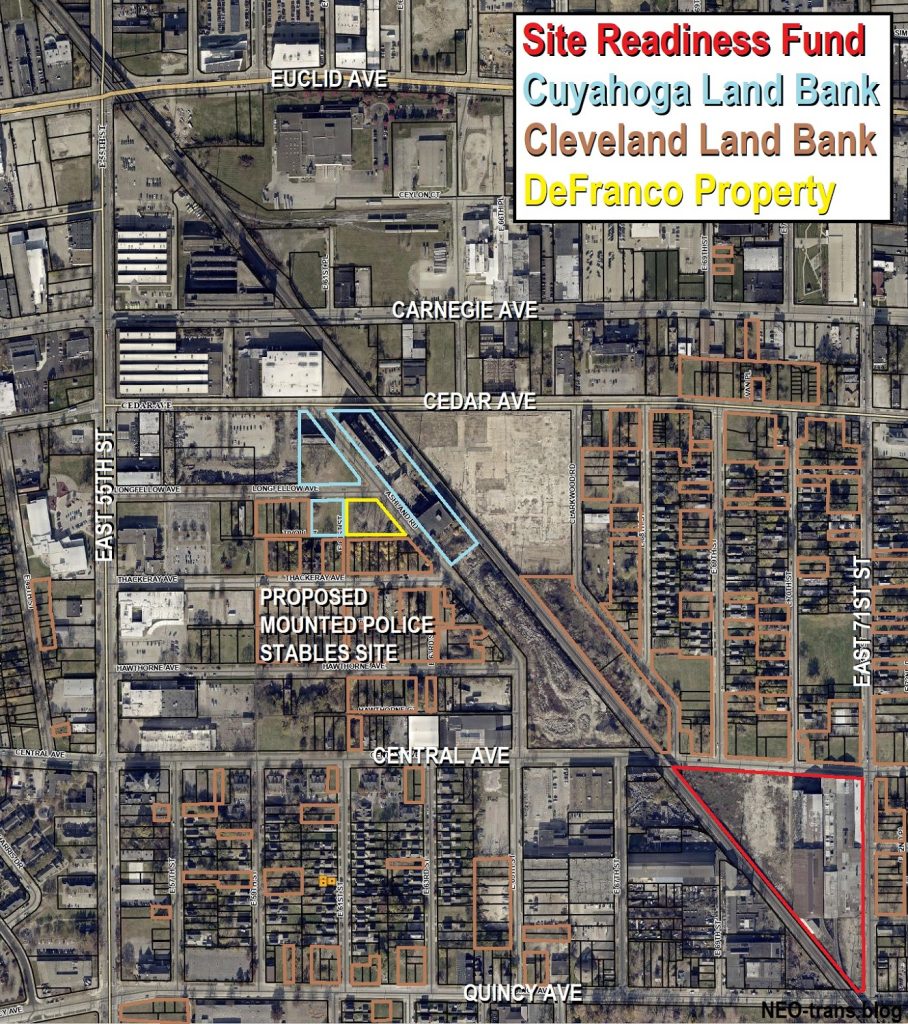
Property map of where Cleveland’s Central and Fairfax neighborhoods meet. Is is the area where properties are being acquired by the city’s new Site Readiness for Good Jobs Fund as well as the established Cuyahoga Land Bank. Additional properties are being sought so the city can market them for redevelopment (MyPlace.CuyahogaCounty.gov, NEO-trans.blog).
Mayor Justin Bibb’s administration created the Site Readiness Fund in partnership with City Council in August of 2023 to return neglected, polluted industrial properties called brownfields to productive use again. The Site Readiness Fund is an independent nonprofit established with a $50 million allocation from the American Rescue Plan Act. Cleveland has more than 4,000 acres — about the size of Shaker Heights — of vacant, abandoned or underutilized industrial properties.
The Site Readiness Fund aims to recoup some of the tens of millions of dollars and thousands of jobs that Cleveland is losing because employers need environmentally clean sites that are large enough — greater than 10 acres, and have proximity to transit, road, rail and solid utility infrastructure. Such sites are in desperately short supply in Cleveland, said Brad Whitehead, managing director of the Site Readiness Fund.
“While we do not yet know what the ultimate use of the 7000 Central site, it will have a focus on jobs with the intention of finding an industrial use that will blend well with the surrounding neighborhood,” Whitehead told NEOtrans in an e-mail. “We are now beginning the process of engaging the neighborhood and reaching out to other stakeholders about potential uses. The same will be true for any properties we pick up in this area or elsewhere in the city.”
The acquisition of 7000 Central was done in partnership with the Cuyahoga Land Bank and the Burten Bell Carr Development Corp. which is using a prior grant from the Fund for our Economic Future to be an investor in the project. And they’re just getting started.
In February, the Cuyahoga Land Bank picked up two more of the largest eyesores in the area — the former Westinghouse Electric/Thompson Aircraft Products Co. (TAPCO), 2203-2209 Ashland Rd., and the Cleveland Railway Co. power house, 2162 Ashland, for its electric streetcars operating on east-side streets prior to the 1950s. Those properties total 4.8 acres and hold hollowed-out structures ranging from 84-126 years old that have partially collapsed in their three decades of inactivity.
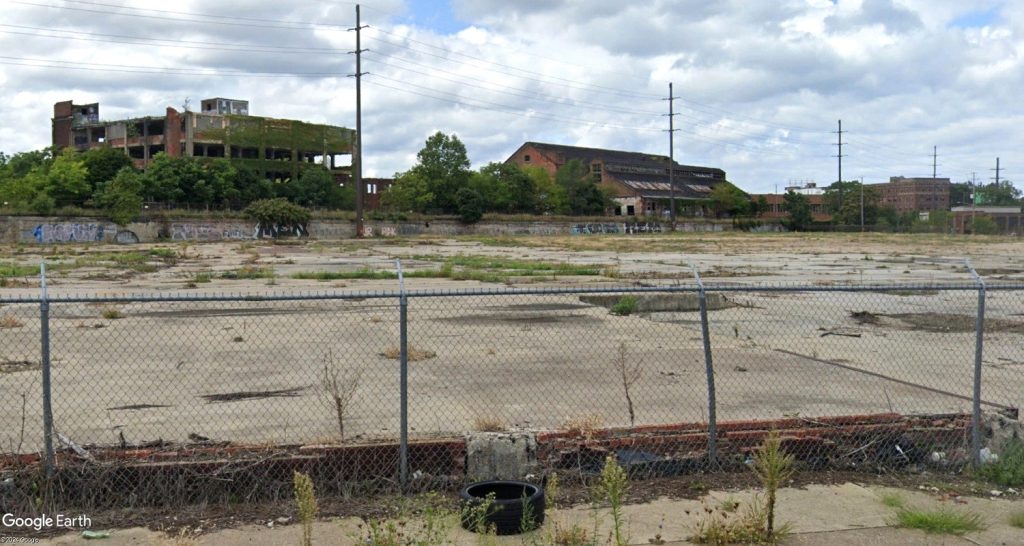
Looking across the empty lot where TRW’s first factory, the Clarkwood Road plant, stood. Here, TRW began as the Cleveland Cap Screw Co. in 1900. Beyond is the elevated freight railroad and the former Westinghouse Electric plant a portion of which was sold off to TRW predecessor Thompson Aircraft Products Co. (TAPCO) which took over the East Cleveland Railroad Co.’s electric power plant for its growing streetcar system (Google).
“We decided to acquire them from state forfeiture and tax foreclosure, in the hope that one day, they can be returned to productive use,” said Douglas Sawyer, assistant general counsel at the Cuyahoga Land Bank. He noted that “There is no intended end use or end user for those properties.”
At first, it appeared in recent weeks that Cleveland-based Berusch Development Partners LLC was making a play for properties in the area, as it initially seemed was the case near the intersection of Euclid Avenue and East 55th Street, There, Berusch was jointly acquiring properties with the nonprofit development corporation MidTown Cleveland Inc.
But those property titles were transferred a few months later in 2019 to the Cleveland-Cuyahoga County Port Authority in the hopes of spurring development. The arrival of the COVID pandemic in early 2020 has held back their redevelopment, as has the nearby presence of the large, hulking shell of the former Warner & Swasey machine tools plant, 5701 Carnegie Ave.
Like many other century-old factories, Warner & Swasey has been vacant for several decades and redeveloping it has been a monumental challenge. Just as its redevelopment will help catalyze other developments nearby, its current neglected state is discouraging them, real estate insiders say.
In the shadows of the former Westinghouse/TAPCO and Cleveland Railway plants is a three-quarter-acre piece of vacant, formerly residential land at Ashland and Longfellow Avenue owned by Kevin DeFranco. His site is also surrounded by Cleveland Lank Bank lots and apparently figures into the city’s vision for the area.
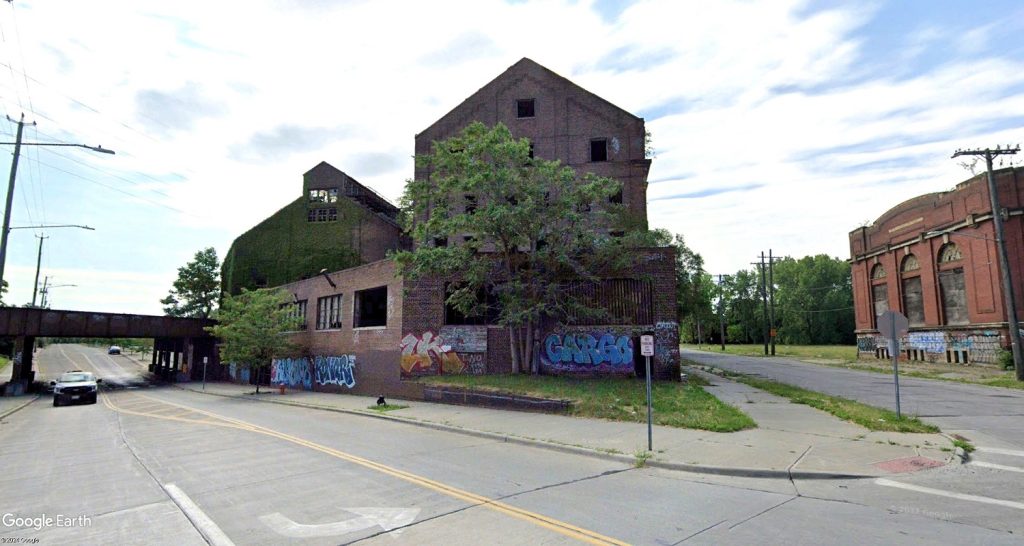
Earlier this year, at Cedar Avenue and Ashland Road, the Cuyahoga Land Bank acquired these two historic but neglected properties. At left is the former Westinghouse Electric/TAPCO plant that was originally built in 1888 as the powerhouse for the East Cleveland Railroad Co.’s street railways. After it combined with other streetcar companies into the Cleveland Railway Co., it built in 1917 the electrical substation at right (Google).
DeFranco’s property is across the street from the proposed site of the Cleveland Mounted Police stables for which no work has been done since a groundbreaking ceremony was held in December 2021. He told NEOtrans that he was contacted by Russell Berusch, president of Berusch Development Partners.
“I got coffee with him (Berusch) a few months ago but told him I wasn’t interested in selling,” DeFranco said. “And then he called again this week requesting a number (sale price). I’m sure I’ll hear from him again. Makes sense why he made a push to buy mine over the past week or two. Probably wanted to try to get me before this (Site Readiness Fund) news came out.”
Tax bills for the 7000 Central property that the city’s Site Readiness Fund acquired last week are mailed to Berusch’s house in Cleveland Heights, according to Cuyahoga County property records. Berusch opened an e-mail from NEOtrans requesting comment and more information but otherwise didn’t respond prior to publication of this article.
“Russell (Berusch) has been providing some support to us in our early days at the Site Fund,” Whitehead said. “We are a small team and he is a seasoned professional. And our mission is good jobs that are accessible to Cleveland residents. So we are looking at properties all over the city that show promise.”
Whitehead also compared the 7000 Central property to the repurposed Mill 19 Hazelwood Green site along the Monongahela River in Pittsburgh, where an abandoned steel mill was reinvented and today is headquarters for Carnegie Mellon University’s Manufacturing Futures Institute. It is home to some of the most advanced manufacturing research being done in the country, he said.
END

